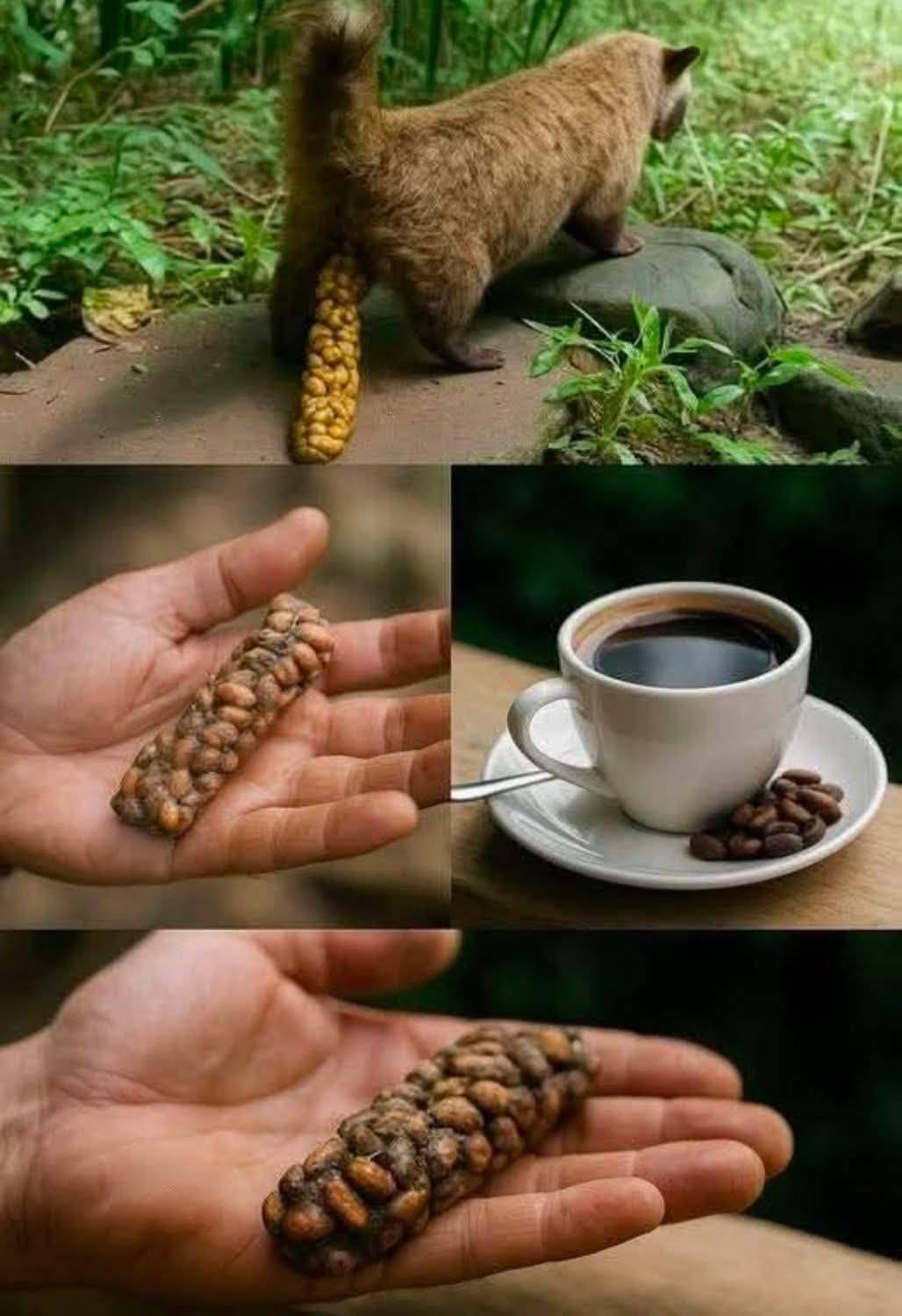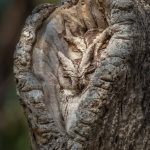From Feces to Fine Brew: The Strange and Lavish World of Civet Coffee

From Feces to Fine Brew: The Strange and Lavish World of Civet Coffee

By Global Gourmet Daily | July 2025
In a world where people pay exorbitant amounts for the rarest truffles, finest wines, and most exquisite caviar, there’s another delicacy that leaves many baffled: coffee that has passed through the digestive tract of a wild animal.
Yes, you read that right.
The image above, as humorous and even unsettling as it might seem, captures the fascinating origin of Kopi Luwak, commonly known as civet coffee. Originating from the lush rainforests of Southeast Asia, this rare beverage has gained a cult following among coffee enthusiasts, elite chefs, and curious luxury consumers around the world.
But how did something that starts as animal excrement become one of the most expensive coffees in the world?
Let’s take a closer look — bean by bean — into the bizarre journey from poop to premium.
What Exactly Is Civet Coffee?
Kopi Luwak is not your ordinary cup of joe. It is made from coffee beans that have been consumed, digested, and then excreted by the Asian palm civet, a small, nocturnal mammal found across Indonesia, the Philippines, Vietnam, and other parts of Southeast Asia.
The civet eats only the ripest coffee cherries — nature’s very own quality control. Inside its stomach, natural fermentation takes place. The outer cherry is digested, while the inner bean passes through the animal’s intestines, where enzymes alter the protein structure of the beans. This results in a smoother, less acidic, and often more aromatic cup of coffee.
The beans are then defecated in clusters, collected by farmers, meticulously cleaned, dried, roasted, and ground into one of the most talked-about coffees in the world.
Origins in Colonial Indonesia
The roots of Kopi Luwak trace back to the early 18th century during the Dutch colonial period in Indonesia. At that time, native farmers and plantation workers were prohibited from harvesting coffee for their own use. However, they noticed that wild civets were eating the coffee cherries and leaving behind partially digested beans in their droppings.
The locals began collecting these beans, cleaning and roasting them, and discovered that the resulting brew was not only palatable but incredibly smooth and fragrant. Word spread, and soon this curious practice became a niche but respected source of coffee.
Over the centuries, what began as a necessity turned into an exotic delicacy.

The Price of Uniqueness
Today, Kopi Luwak holds a reputation for being the world’s most expensive coffee, often selling for between $250 to $600 per pound, depending on origin and processing quality. A single cup in a high-end café can cost $50 to $100.
So what justifies the staggering price?
-
Scarcity: The wild civets produce a very limited amount of beans naturally. Each animal might only “process” a small batch every few days.
-
Labor-Intensive Production: Beans must be carefully collected from forests or civet droppings, washed several times, sun-dried, dehulled, sorted, roasted, and packed — often all by hand.
-
Exotic Appeal: The story behind Kopi Luwak — the animal involvement, fermentation process, and rarity — adds to its luxury mystique.
-
Taste: Many aficionados claim the resulting brew is less bitter, with a uniquely rich, earthy, and caramel-like flavor.
The Science Behind the Poop
What really happens inside the civet’s gut?
As the beans pass through the civet’s digestive system, a number of transformations occur:
-
Fermentation: The fruit pulp is digested, but the coffee beans remain mostly intact. During this period, fermentation naturally occurs, which enhances flavor complexity.
-
Enzymatic Breakdown: Proteins in the beans are partially broken down, leading to lower acidity and bitterness.
-
Removal of Pulp Residue: The beans come out cleaner and more polished than their original state inside the cherry.
This biochemical process results in what many describe as a smooth, mellow coffee, free from the harshness and acidity common in other brews.
However, skeptics argue that the difference is subtle — and that the price tag is more about novelty than taste.
The Flavor Profile
So, what does civet coffee actually taste like?
While taste can be subjective, common descriptors include:
-
Earthy
-
Nutty
-
Smooth
-
Low-acid
-
Hints of chocolate or caramel
-
Mild aroma with floral notes
Unlike many robust coffee varieties that come with intense, acidic bites, Kopi Luwak is known for its delicate and refined finish. That
Wild vs. Captive: The Ethical Debate
As demand for Kopi Luwak skyrocketed in the 21st century, so did the controversy.
To meet growing global interest, some producers began capturing civets and keeping them in cages, force-feeding them coffee cherries to increase yield. This has led to widespread criticism from animal rights organizations, scientists, and even coffee lovers themselves.
Key concerns include:
-
Animal Cruelty: Civets in captivity are often kept in poor conditions, deprived of their natural diet and environment.
-
Health and Stress: Forced feeding and cramped cages can lead to malnutrition, disease, and extreme stress in the animals.
-
Product Quality: Stressed or unhealthy civets do not select the best cherries naturally, affecting the quality of the coffee.
As a result, ethical consumers are now encouraged to choose only wild-sourced, certified Kopi Luwak. These beans are collected from forest floors where free-roaming civets have naturally selected and passed them — the way the tradition originally began.
Several certifications now exist to promote sustainable and humane civet coffee production, including wildlife monitoring, third-party inspections, and fair trade standards.
Global Popularity & Cultural Impact
Despite its obscure origins, civet coffee has exploded into international recognition thanks to its bizarre production story, high price tag, and celebrity endorsements.
Famous appearances include:
-
The Bucket List (2007): In this Hollywood film, Jack Nicholson’s character drinks Kopi Luwak daily — only to discover its origins in a comedic twist.
-
CNN, BBC, and National Geographic have all run features on the coffee’s wild production process.
-
High-end cafés in Tokyo, Dubai, London, and New York offer civet coffee tasting experiences for luxury tourists.
In many ways, the story of Kopi Luwak is a modern fable — blending tradition, biology, economics, and consumer curiosity into a single cup.

Countries Producing Civet Coffee
Today, several countries produce Kopi Luwak or civet-style coffee:
-
Indonesia (Sumatra, Bali, Java): Th
-
Vietnam: Known for cà phê chồn, its own version of civet coffee.
-
Philippines: Produces “Kape Alamid,” a rare and expensive local variant.
-
India: Home to “Coorg Civet Coffee,” grown in Karnataka.
-
Ethiopia and Thailand have also experimented with civet coffee to a lesser degree.
Each region puts its own twist on the processing, roast profile, and marketing — creating a diversity of flavors under the same exotic umbrella.

Alternatives & Innovations
In response to ethical concerns, researchers have begun exploring synthetic or lab-based fermentation methods to recreate the unique flavors of Kopi Luwak — without involving animals at all.
-
Enzymatic treatment of beans: Lab-replicated enzymes that mimic those in the civet’s gut.
-
Fermentation tanks: Controlled environments where beans are soaked in microbial cultures that simulate digestion.
-
AI-based flavor mapping: Scientists analyze civet coffee flavor chemistry to artificially reproduce it in other coffees.
While purists argue that nothing beats the real thing, these alternatives offer a more scalable, humane, and eco-friendly solution for the future of exotic coffee.
A Cup That Divides the World
Civet coffee is more than a drink. It’s a story — of nature, history, science, ethics, and luxury. For some, it is the pinnacle of indulgent taste. For others, it represents misplaced priorities and ethical oversights.
The image of a wild animal defecating a future cup of coffee might make you laugh, cringe, or marvel. But beyond the humor lies a remarkable example of how global culture, curiosity, and economics can elevate even the strangest of things into a world-class delicacy.
If you ever decide to sip on Kopi Luwak, make sure to check the source, know the ethics, and respect the bean’s wild journey.
Because sometimes, the weirdest things make the most unforgettable stories — and the smoothest cups.











